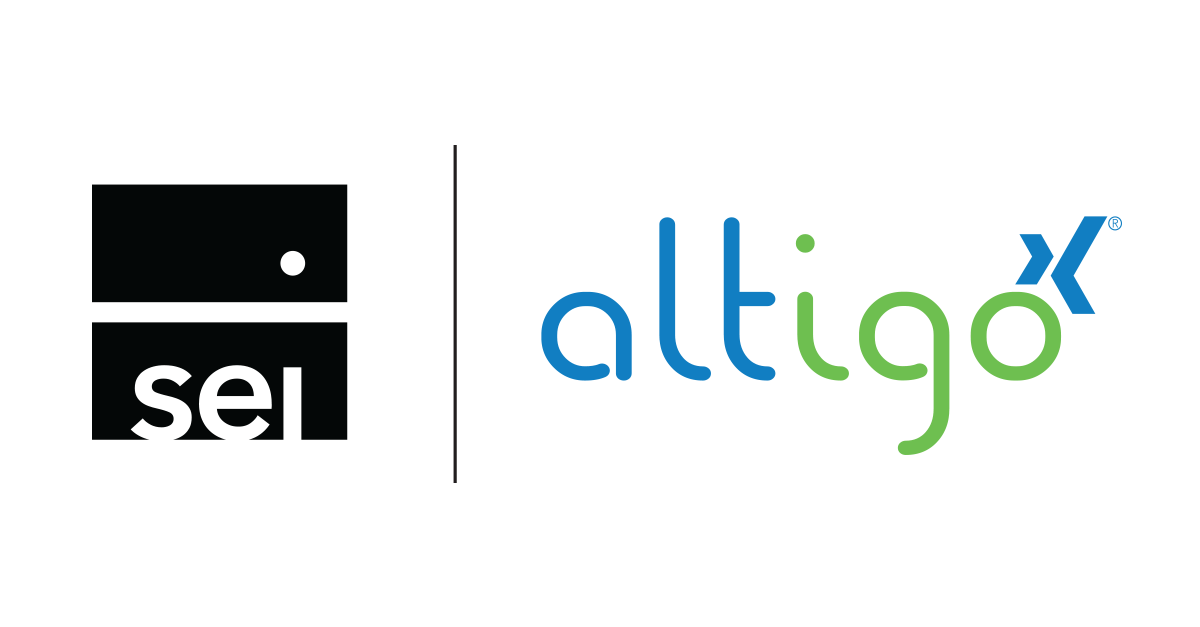SEI Acquires Altigo
SEI to Leverage Unique Industry Position to Meet Market Demand and Streamline Investment Process for Alternatives
5 min read
 John Rickman
:
October 24, 2022 at 2:17 PM
John Rickman
:
October 24, 2022 at 2:17 PM

The following interview with Altigo co-founder Mat Dellorso first appeared in the September 2022 issue of Real Assets Advisor. In this interview, Mat shares his belief that alternative investments could comprise a bigger part of every investor’s portfolio, and his thoughts on what more can be done to make that happen.
You say that alternative investments could comprise at least 10-20% of a high-net-worth investor’s portfolio. Why is that?
Alternatives are going more mainstream. They're becoming better structured with investor alignment and outcomes in mind, and the best investors in America—your endowments, your pensions, your large institutional investors—have always used alternative investments to outperform retail investors because they're able to invest long term, find unique opportunities, and not just be beholden to stocks and bonds.
For many investors and advisers, alternative investments were typically just categorized as any investments other than traditional stocks, bonds, or mutual funds. I think the word "alternative" is a misnomer because these are investments that are needed. Many investors in America know and understand real estate and own a home, so the trend is that more investors are realizing that alts can play a meaningful and important part of an investment portfolio. Alts, as we think of them at Altigo, provide the potential for diversification, non-correlation with public market returns, growth, and income.
I think the timing for alts is good now because of the recent volatility in the financial markets. For the first time since 2008/2009 you're seeing a market where it's hard to find a good place for your money—the value of equities is declining broadly, fixed-income prices are trending lower as yields rise, and the value of cash and equivalents is rapidly eroded by inflation, and the crypto bubble has begun to deflate.
Commodities, like oil and gas, are doing well. Real estate hasn't declined as fast as your public equity markets and bond returns. So, having some alts in your portfolio right now could benefit retail investors. And these alternative investment products are becoming more available, which is another trend making alts timely and sensible.
Alternative investments deserve to be a more meaningful part of a high-net-worth investor's portfolio than just the traditional 60/40 growth-and-income model. A goal of 10-20% is good for sophisticated investors who understand the risks and can weather longer-term investment horizons.
Could you explain in more detail the importance of thinking long term when investing in alts?
Although timing and duration are a big part of investing in alternatives, thinking of alts as always having a 10-year lifecycle is a common misconception, as well. It is true that many alternatives are set up as private funds with a 10-year lifecycle. Their hold period involves raising the funds, which might take a year. Deploying the capital might take three to four years, and those investments need time to perform and return money to investors, which can take you to the six-year mark.
But there are many other alternative investment types with shorter lifecycles of one to five years. Real estate, energy, and litigation finance investments can sometimes have shorter hold times and more liquidity. Additionally, these same products may offer redemptions on a set schedule, annually, quarterly, or every so often.
You mentioned the expanded availability of alts. Could you speak more to the implications of that?
Advisers and investors need more education around alternatives to better understand the risks they pose. People really need to understand what they're investing in and why. These products are more complex than public stocks or bonds, the information for which can easily be found in standardized formats online, on a brokerage account or whatever you use to look up public companies.
Alts are typically private or non-traded, and information on them isn't always readily available, so investors or their advisers must talk to a manager and/or do due diligence where they can. For example, with real estate, it's good to understand the demographics and even go see the property.
Alternatives are, indeed, risky, but large institutions like Blackstone and Starwood have entered the space and removed some of the fees that made alts costly. They've also provided greater transparency by improving investor relations and improving documentation to allow people to better understand these types of complex products. Certainly, the tools available for diligence and research on alts have grown over the past few years and are available to advisers and clients.
Is technology keeping pace with the increase in the availability of alts?
The alternative investment market is enormous, and there are new technological tools—including what Altigo and others are doing in terms of subscription automation—that are providing better access, transparency, and efficiency into that market. But these tools are still relatively new, having largely sprung up around the 2012 JOBS Act.
Alternative investments are really one of the last areas of investment securities that are still done by paper and check for two reasons: 1) because technology is still playing catch up, and 2) because it was only 1-5% of anyone’s investment portfolio, so naturally you're going to focus on the things that are smallest last. But now with technology maturing and the alternative investment market growing, there's a focus on expanding that allocation to alts.
As a co-founder of Altigo, you were inspired to step into that technology void. Could you tell us about that?
My co-founder and I came out of college around the second wave of the technology-as-information age (the rise of social networking, etc.) and alternative investments were still an insider's club—you had to know somebody who knew somebody to invest in alts. This was before the passage of the JOBS Act, and the proliferation of alternative investment information was still truly private. You could not generally solicit, opportunities were not shared, and they were not syndicated.
We knew high-net-worth people who wanted to allocate to alternatives, and we knew people who were offering alternative investments that were attractive from a risk-and-return standpoint. We also saw a void of such offerings in large financial firms because they were risky, not well understood and lacking in information, and we wanted to solve that problem. We were inspired to take this opportunity to the next level, which is why we founded WealthForge in 2009 and later refined our technology offering with Altigo.
Looking forward, what is on your wish list for the industry at large?
I think the industry is doing a pretty good job in starting to provide information about and access to alternatives, as well as boosting adviser interest in alternatives and getting their clients into an attractive alts investment.
But we still need to improve the post-transaction process. When you invest in a public equity or bond, you get updated information on performance evaluation metrics in near real time and at your fingertips. In alternative investments, that feedback loop is slower. In some cases, people aren’t obliged to share information on a regular basis, or they simply lack the tools to do that.
Performance history and how an alternative investment fits in a portfolio in terms of modeling, balancing and rebalancing isn’t always clear to investors. For instance, what if I want to take money from an investment that has performed well, potentially sell that investment via a redemption, or sell it to somebody else in a secondary transfer, and reinvest it into something else? I think post-trade there are a lot of areas for improvement in terms of communication, information sharing and operational fit in the evaluation of ongoing performance.
With Altigo we’ve really been focused on trade execution, simplifying the paperwork and getting people into position with as little friction as possible.
But there’s a lot more to be done pre-trade, too. For instance, where do you go to find all the alternative investment offerings that are out there in each market? Who are the sponsors? And once I find something of interest, how do I model that into a hypothetical portfolio? How do I back test that in terms of performance, and how do I effectively communicate to a client that this is the right strategy for them through proposals or educational content? Improving the pre-trade process will go a long way to upping investors’ alts allocations from 1-5% to 10-20%.
Investing is a privilege. Investing is an opportunity. Investing is all about optimizing choices and wealth, and wealth is really about the choices that we have and what we do with our money. If the wealthiest people have the most choices, then they can choose to give that money back or move society forward by making riskier, long-term investments. But, if we can get the mass of investors fluent in alts in the same way that high-net-worth investors are, then the hope is that there will be greater wealth and more progress for society.
Likewise, individual investors will have more choice, which is the goal of the alternative investment industry, as well as the technology and tools that we're building on as a company. At a higher level, alternative investments make sense not just because they diversify you away from stocks and bonds in times of volatility, but they help grow the middle class, affluency, and wealth, which ultimately leads to progress in society.
Interested in learning more about how electronic subscription processing technology like Altigo can help your business? Schedule a demo today to learn more:

SEI to Leverage Unique Industry Position to Meet Market Demand and Streamline Investment Process for Alternatives

Tax-advantaged, non-traded business development companies (BDCs) are alternative investment funds designed to boost the economy while generating a...

The following is a guest post by Richard Hillson of Hillson Consulting: Venture debt is a term that you may not have heard, but it is certainly one...